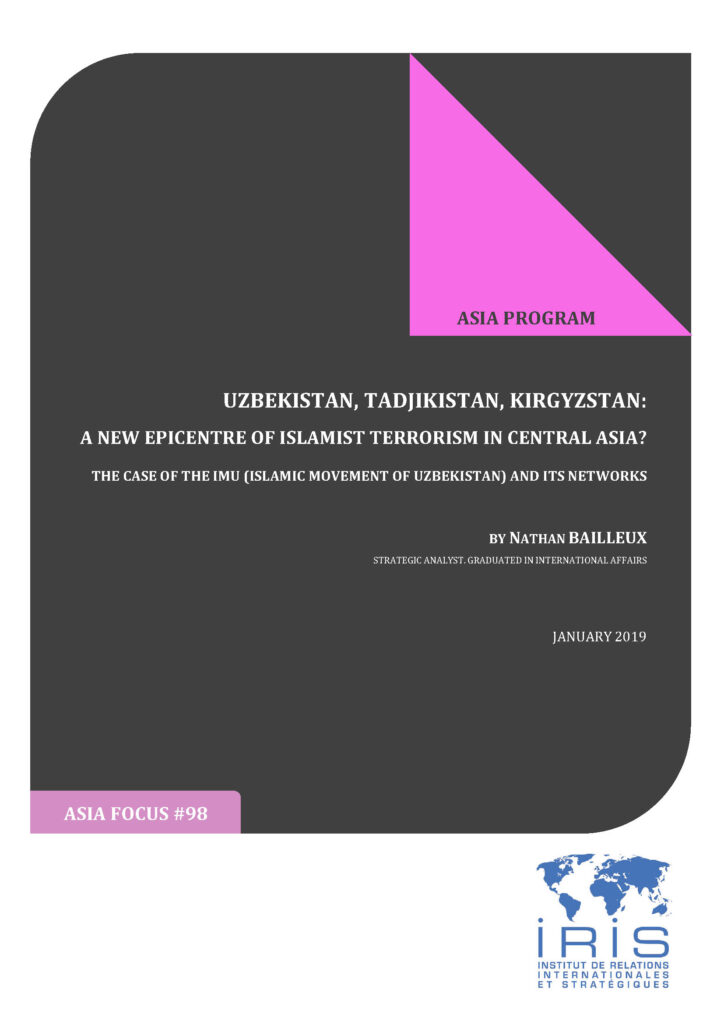Notes / Asia Focus
11 janvier 2019
Uzbekistan, Tadjikistan, Kirgyzstan: a New Epicentre of Islamist Terrorism in Central Asia? The Case of The IMU (Islamic Movement of Uzbekistan) and Its Networks

« […] if there is no will for djihad in a community comprised of muslims, we cannot regard this community as Islamic » – Zubayr Ibn Abd Al-Rahman, a IMU theologian, July 5th 1999.
The IMU is a militant islamist group that was first willing to overthrow the president of Uzbekistan Islam Karimov before pursuing broader goals. By the end of the 1990s, the IMU had entered a transnational logic. The IMU thus places the jihad as a duty of its members who have to fight to extend the « Dar-al-Islam ». This group seems to have vanished due to a harsh repression by the Taliban. But the IMU may still have ways to carry another attacks. On a larger scale, the security situation in Great Central Asia could worsen in the context of the demise of ISIS in Syria and Irak and the subsequent settlement of the IMU cells from the Syrian and Iraki battlefields to Afghanistan. This is the opinion of Murat K. Sembinov and Asel T. Baiturbayeva in 2016. This paper asserts both the threat set by the IMU at the border shared by Tajikistan and Afghanistan and the role of the IMU cells in the Ferghana valley as a possible troublemaker for the region. First, Islamism was born in Uzbekistan and Tajikistan under the USSR era before being a threat to the independent Republics…

